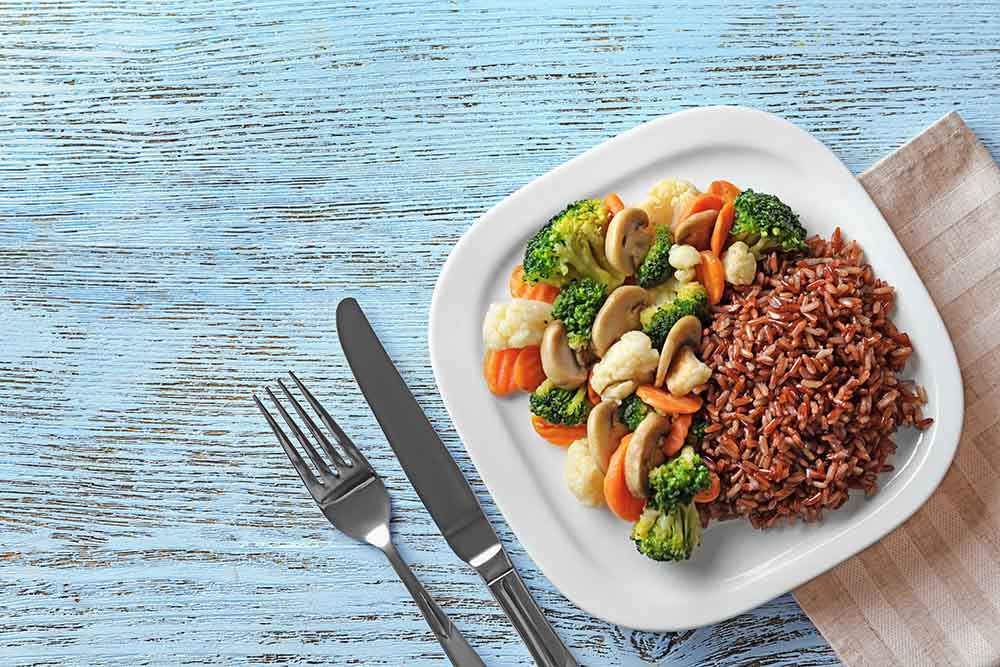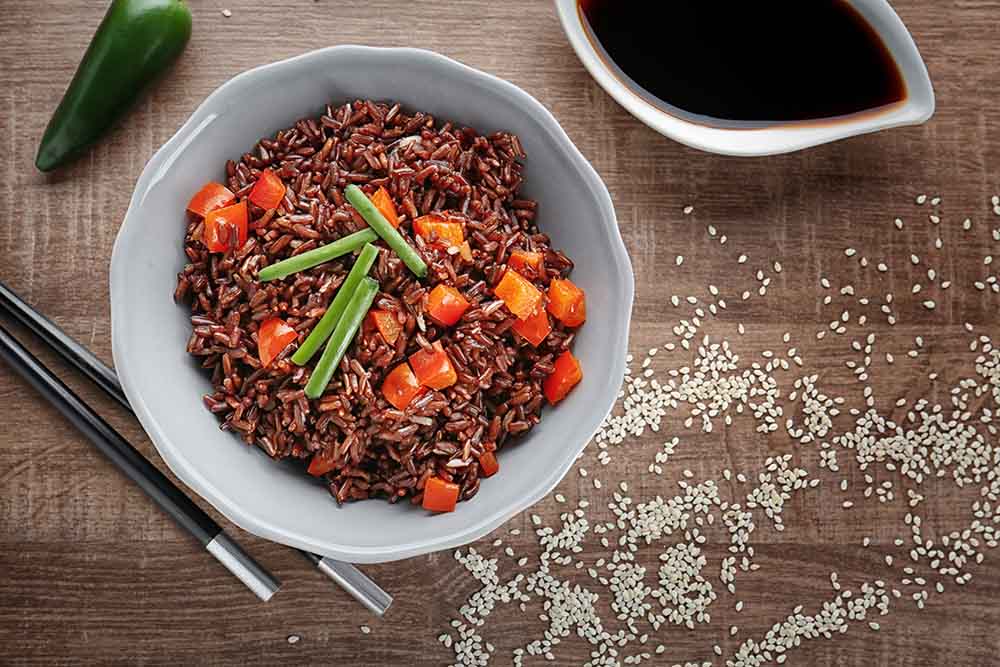Red rice, also known as ‘Weedy Rice’ or ‘Bhutanese Red Rice,’ is a variety of unpolished rice that retains its bran layer, making it nutrient-dense. The red colour of this rice comes from the presence of anthocyanins, a powerful antioxidant that offers several health benefits. Red rice is popularly used in Southeast Asian cuisine and is becoming increasingly popular in Western countries due to its numerous health benefits.
History of Red Rice
Red rice has been cultivated for thousands of years in countries like Bhutan, India and Thailand. It was primarily used in these countries for its medicinal properties. Today, red rice is widely available in most supermarkets and health food stores worldwide, making it accessible to all.
Difference between Red Rice, White Rice and Brown Rice
Red rice, white rice and brown rice differ in their nutritional content and processing methods. White rice undergoes extensive processing, removing its bran and germ layers, making it lower in nutrients than brown and red rice. Brown rice, on the other hand, has its bran layer intact, making it higher in fibre and nutrients than white rice. Red rice, like brown rice, retains its bran layer, making it higher in fibre, antioxidants and other essential nutrients.

How Red Rice can Help with Blood Sugar Control and Heart Health
Red rice is a low glycemic index food, meaning it releases sugar slowly into the bloodstream, making it an ideal food for people with diabetes or anyone looking to manage their blood sugar levels. Additionally, red rice is rich in fibre, which helps lower cholesterol levels and reduce the risk of heart disease. The antioxidants present in red rice also help reduce inflammation and improve heart health.
Benefits of Consuming Red Rice for Heart Health
Consuming red rice can help reduce the risk of heart disease by lowering cholesterol levels, regulating blood pressure, and reducing inflammation. The antioxidants present in red rice protect the heart and improve blood flow, reducing the risk of heart attacks, strokes, and other cardiovascular diseases.
Benefits of Consuming Red Rice for Digestion
The high fibre content in red rice helps regulate bowel movements and prevent constipation. Additionally, the fibre in red rice feeds the good bacteria in the gut, promoting gut health and reducing the risk of digestive issues like irritable bowel syndrome (IBS) and colon cancer.
Benefits of Red Rice for Skin and Hair Health
The antioxidants present in red rice protect the skin from damage caused by free radicals, reducing the signs of aging, and promoting healthy skin. Additionally, red rice is rich in iron, which promotes healthy hair growth and prevents hair loss.
Advantages of Red Rice for Overall Health
Red rice is a nutrient-dense grain that offers several health benefits. It is high in fibre, antioxidants, vitamins, and minerals, making it a great addition to any healthy diet. Consuming red rice can help regulate blood sugar levels, reduce the risk of heart disease and digestive issues, and promote healthy skin and hair.

Conclusion
Red rice is a versatile and nutrient-dense grain that offers numerous health benefits. It can help regulate blood sugar levels, improve heart health, promote healthy digestion, and boost skin and hair health. Incorporating red rice into your diet can improve your overall well-being and support a healthy lifestyle.
FAQs
Is red rice the same as brown rice?
No, red rice and brown rice are not the same. While both varieties retain their bran layer, giving them their brownish colour, red rice has a unique reddish hue due to the presence of anthocyanins.
Can red rice help with weight loss?
Yes, red rice can help with weight loss. Its high fibre content makes you feel fuller for longer, reducing your calorie intake and helping you lose weight. Additionally, its low glycemic index helps regulate blood sugar levels, reducing cravings for sugary foods.
Can red rice be substituted for white rice in recipes?
Yes, red rice can be substituted for white rice in most recipes. However, keep in mind that red rice takes longer to cook than white rice, so you may need to adjust your cooking time accordingly.
Is red rice gluten-free?
Yes, red rice is gluten-free, making it an excellent option for people with gluten intolerance or celiac disease.
How should red rice be stored?
Red rice should be stored in an airtight container in a cool, dry place. Stored properly, it can last for up to six months.
Is red rice more expensive than other types of rice?
Yes, red rice is typically more expensive than white rice due to its higher nutrient content and the fact that it is often imported from countries like Bhutan and India.
Is red rice suitable for people with diabetes?
Yes, red rice is suitable for people with diabetes as it is a low glycemic index food, meaning it releases sugar slowly into the bloodstream, helping regulate blood sugar levels. However, like all carbohydrates, it should be consumed in moderation as part of a balanced diet.